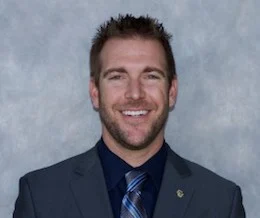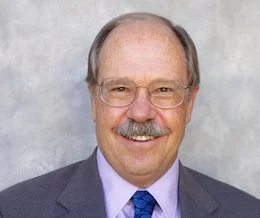Sleep Apnea Treatment in Albuquerque, NM
Sleep apnea is a sleep disorder characterized by interrupted breathing during sleep. There are two types of sleep apnea:
- Central sleep apnea: This type occurs when the brain doesn’t send proper signals to the breathing muscles.
- Obstructive sleep apnea: This type occurs when soft tissues in the throat relax and block the airway during sleep.
What Causes Sleep Apnea?
Sleep apnea occurs when there is an obstruction in the throat or mouth, which obstructs the airways and prevents oxygen from reaching the lungs. This can be caused by either the tongue or the jaw. When the jaw is misaligned, it can cause it to be pushed too far back and obstruct the airway. An overbite can also cause the jaw to be pushed too far back. When the jaw is aligned properly, the tongue is able to move properly in the mouth, and the patient can breathe normally. If you suspect you have sleep apnea, visit your doctor so that they can diagnose you properly and prescribe treatment.
What Are The Symptoms of Sleep Apnea?
If you have sleep apnea, you’ll likely feel tired during the day. You might also have excessive throat and jaw pain, headaches, and difficulty concentrating. The other symptoms of sleep apnea include the following:
- Loud snoring
- Episodes in which you stop breathing during sleep
- Gasping for air during sleep
- Dry mouth during the night
- Insomnia
- Excessive daytime sleepiness
How Is Sleep Apnea Diagnosed?
There are a few ways your doctor can diagnose sleep apnea, but the most common is a sleep study. This study involves an overnight stay at a sleep clinic or hospital where you will be monitored while you sleep. You will be hooked up to a variety of monitors that analyze your breathing, heart rate, oxygen level, and brain patterns. If there are any signs of sleep apnea, the staff can wake you and ask you to complete some tasks, such as walking in a straight line.
What Are My Sleep Apnea Treatment Options?
In individuals with obstructive sleep apnea (OSA), normal breathing is disrupted as the airway collapses. This causes episode where breathing stops entirely as you sleep. These episodes can occur up to hundreds of times a night. OSA can cause you to stop breathing for short periods of time, up to a minute, which can occur 30 times or more per hour. OSA is linked to a number of serious health conditions. Treatment for OSA includes lifestyle changes, oral devices, breathing devices, and surgery.
Sleep apnea is a potentially serious condition that causes breathing to stop periodically throughout the night. These pauses in breathing, called apneas, typically last between 10 and 30 seconds. These episodes can occur hundreds of times throughout the night, making sleep extremely difficult, if not impossible.
Treatments
Sleep apnea treatment options will vary based on the severity of the condition. Mild to moderate sleep apnea can often be treated with lifestyle changes, like losing weight, stopping smoking, or sleeping on your side. A CPAP machine may also be prescribed. This treatment delivers pressurized air through a mask, holding the airway open throughout the night.
Sleep apnea is more severe when breathing stops completely for 10 seconds or longer. This condition requires immediate intervention. Oral appliances for sleep apnea are one possible treatment option. These custom-fitted mouth guards reposition the jaw and tongue, which helps keep the airway open. Sleep apnea machines, like the CPAP, may also deliver pressurized air through a mask.
Sleep Apnea Machines
- Continuous positive airway pressure (CPAP): CPAP stands for Continuous Positive Airway Pressure. CPAP therapy is a treatment for obstructive sleep apnea (OSA) that involves wearing a mask over your nose while you sleep. The mask is connected to a machine that blows pressurized air into your nose to help keep your airway open.
- Bilevel positive airway pressure (BiPAP): BiPAP stands for Bilevel Positive Airway Pressure. This machine delivers pressurized air through a hose and mask. This machine has features that allow it to deliver two levels of air pressure, which makes it easier for people with sleep apnea to breathe. The BiPAP machine blows air into the patient at a high-pressure level during inhalation and a lower pressure level during exhalation. The BiPAP machine provides a steady stream of air, which helps maintain an open upper airway.
- Automatic positive airway pressure (APAP): APAP stands for Automatic Positive Airway Pressure. This machine delivers pressurized air through a hose and mask, but it automatically adjusts the pressure based on the person's breathing.
- Oral Appliances for Sleep Apnea: Oral appliances for sleep apnea are custom-made devices worn in the mouth to treat sleep apnea. Oral appliances for sleep apnea work by holding your lower jaw, tongue, soft palate, and/or uvula forward. This keeps the airway open, so you can breathe easily. Oral appliances for sleep apnea are worn only while you sleep.
Surgery for Sleep Apnea
Surgery is considered a last resort in sleep apnea treatment. Surgery is only recommended in severe cases when other treatments are not working. Surgery may also be needed if a patient has obstructive sleep apnea caused by a severely misaligned jaw or palate. Surgery can be used to remove excess tissues blocking the airway, reposition the jaw, or correct a deviated septum.
The most common types of surgery for sleep apnea include:
- Nasal surgery. This surgery is performed to fix nasal problems, like a deviated septum.
- Uvulopalatopharyngoplasty (UPPP). Uvulopalatopharyngoplasty (UPPP), also sometimes called laser-assisted uvulopalatoplasty (LAUP), is a type of sleep apnea surgery performed to remove excess tissue from the back of the throat. This tissue blocks the airway when the patient is asleep, causing the symptoms of sleep apnea. During UPPP, the soft tissue at the back of the throat is removed, usually with a laser. This treatment is often performed in conjunction with other sleep apnea procedures (such as CPAP therapy).
- Mandibular maxillomandibular advancement surgery. Maxillomandibular advancement surgery is a procedure that is used to treat sleep apnea. During surgery, the lower jaw is moved forward, and the upper jaw is pulled forward. This opens up the airway and allows for better airflow.
To find out more about the dental services offered at Gherardi and Moore Dental, call (505)-293-6125 or schedule an online consultation. You can also visit Dentist Albuquerque, NM at 8310 Palomas Ave NE Suite A, Albuquerque, NM 87109.
.
Office Hours
MON - FRI7:00 am - 5:00 pm
SAT - SUNClosed


